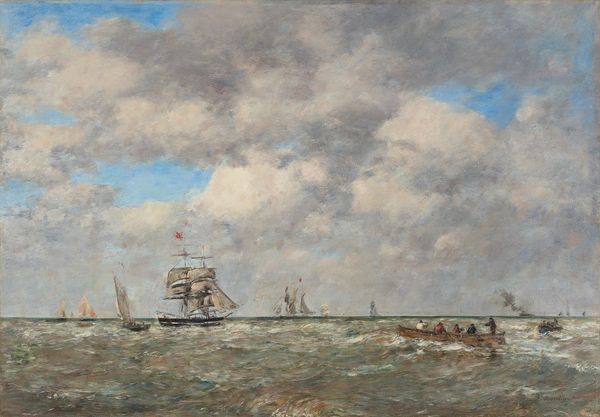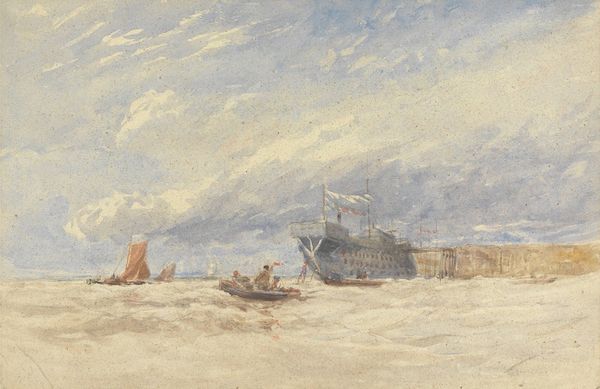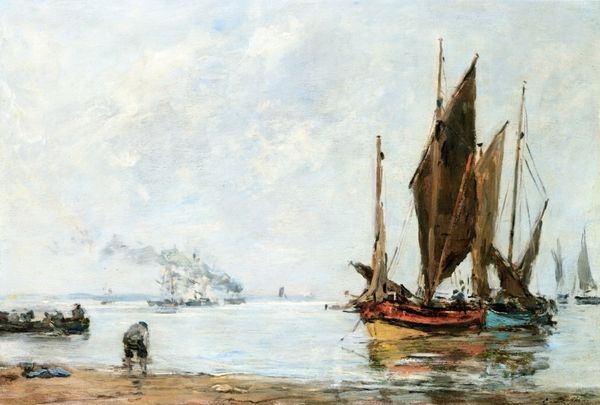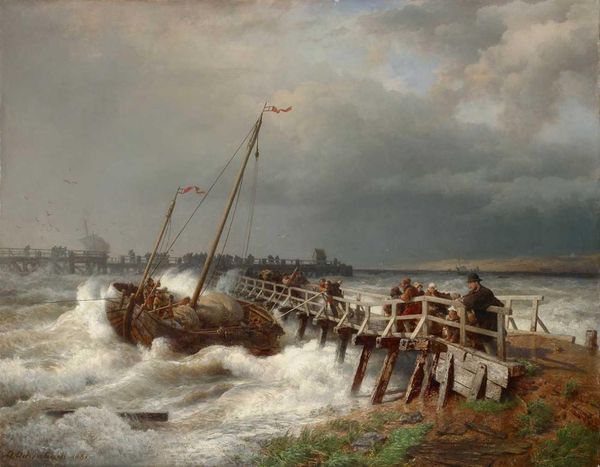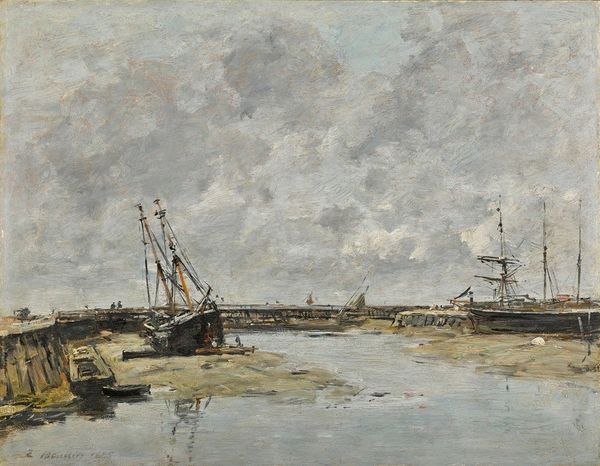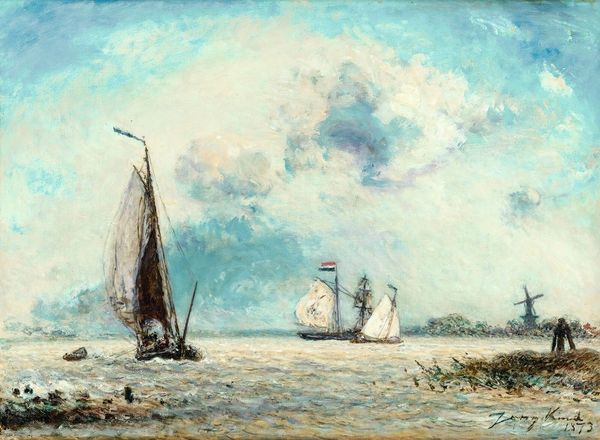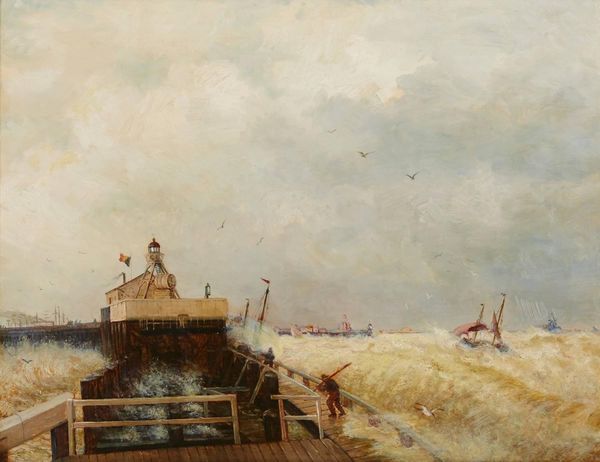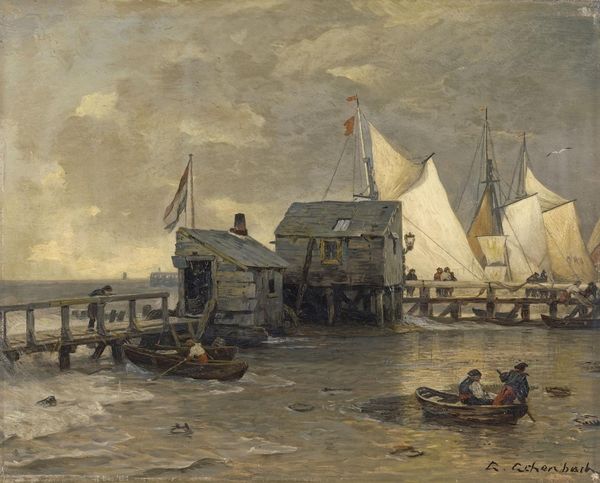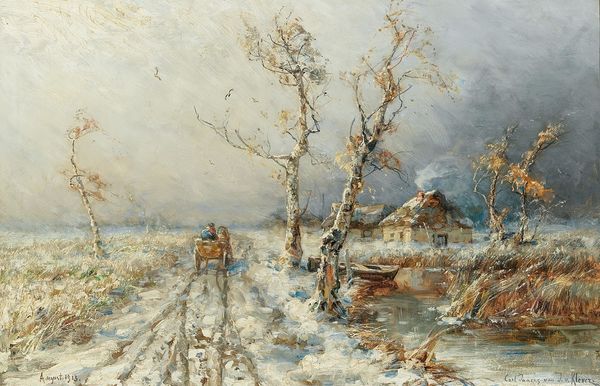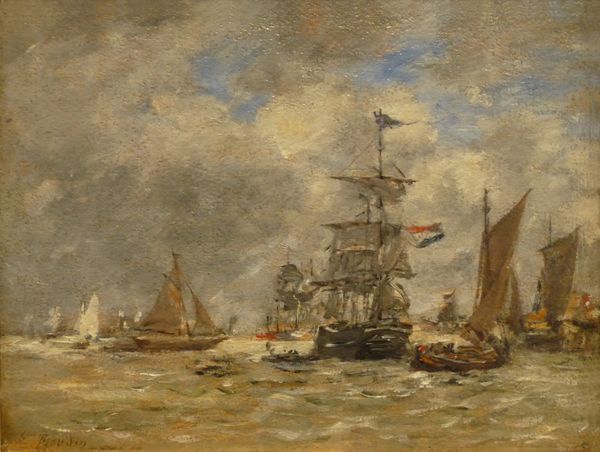
Copyright: Public Domain: Artvee
Editor: So this is "Scène D’Hiver En Hollande" painted by Johan Barthold Jongkind in 1871. The texture created by the oil paint is quite striking; it gives a real sense of the cold, harsh winter. What elements of the composition do you find most compelling? Curator: I am immediately drawn to the carefully balanced asymmetry. Notice how the windmill on the left establishes a strong vertical axis, which is then counterweighted by the receding figures and distant architectural details on the right. Observe also the stratification of space and its pictorial depth enhanced by muted tonal variation of blues, greys and whites. What’s particularly successful here is the interplay between line and volume. Editor: Can you explain more about the interplay between line and volume? Curator: Certainly. Jongkind uses impasto to create a palpable sense of volume, particularly in the foreground where you can feel the icy surface. The subtle variation in the texture enlivens the field, while above it we find birds dynamically depicted as a linear series of black shapes trailing off to the horizon. Notice how that same graphic touch is applied in miniature to render a sailboat on the right, and bare branches just beside the great windmill to the left. Line articulates shape; impasto gives shape dimension. Editor: That's a really interesting observation. I was so focused on the impressionistic qualities that I hadn't noticed the finer details of the brushstrokes and compositional elements. Thank you! Curator: My pleasure. Paying close attention to such minute, technical characteristics enriches the viewing experience and, by extension, our understanding of Jongkind's skillful artistry.
Comments
No comments
Be the first to comment and join the conversation on the ultimate creative platform.

